
Sailing Past
Life can be quite unpredictable. One minute, Robert Watt, 31, a world-class bagpiper from Northern Ireland,was at a festival in Switzerland entertaining the crowds. A few days later he was standing on the bow of a century-old sailing yacht a quarter-mile off the coast near Monaco playing Scotland the Brave into a grayish sky. Had the ghost of a Scottish sailor been haunting the Mediterranean that afternoon, he would have no doubt wondered if he hadn’t imbibed too much single malt before heading down the Low Road. For there, on the mellifluous, deep-blue sea, was not one, but rather an entire armada of venerable old sailing yachts interspersed with vintage Riva and Craft speedboats, their gas-guzzling V-8 engines gurgling happily in the water.

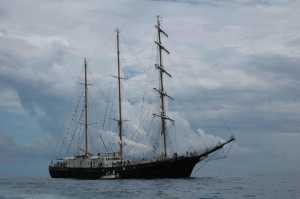
From September 16-20, while the media was still busy figuring out where the financial markets’ liquidity has gone to, Monaco, a hub of international finance and individuals in high income brackets, was turning its attention to the joys of its bi-annual ritual, the Monaco Classic Week. This is not merely an ostentatious exhibition of lucre, filthy or otherwise. It is a meeting of serious sailors and fans of classic motor yachts, schooners, gaff-cutters, ketches and other sail yachts, and classic speed boats, as well. Some famous vessels were on display, such as the Pen Duick, the first vessel owned by the late solo Atlantic crosser Eric Tabarly, and the Eleonora, an exact replica of the Westward, a racing schooner built in 1910. They were joined by training ships, like the Russian steel-hull windjammer Sedov, which once hauled grain and coal across the Atlantic under German flag, or the three mast Italian Signora del Vento, built in Poland in 1962. Another Italian bark was also in port, the Palinuro.
Among the motor yachts present was the justifiably famous SS Delphine, whose dramatic history includes a fire and sinking, a major crash, and serving as the flagship of the American Navy during World War Two. In 1945, Franklin Roosevelt and Winston Churchill met aboard to confer about the upcoming conference in Yalta. SS Delphine was built in 1921, in Michigan, for Horace Dodge one of the two brothers of Dodge motorcar fame. It is now owned by the Belgian Clothing magnate Jacques Bruynooghe, who spent somewhere in the region of 40 million Euros restoring her.
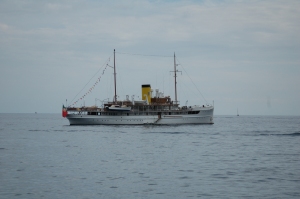

The boats were not the only items on display.
On the way to the clubhouse, a long line of vintage Lancias stood guard, a reminder that Lancia was one of the event’s partner. In their midst, perhaps incongruously, lay the skeleton of what looked like a Bleriot IX, with an Anzani three-cylinder semi-radial engine driving a hand-carved propeller, the monoplane – or type thereof – that carried aviation pioneer Louis Bleriot over the Channel in 1909.

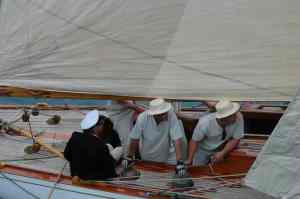
Forever young
Monaco’s Classic Week is definitely a celebration of luxury, but it is a luxury defined by ease and comfort, rather than brute force and speed. Two eras clashed sharply in the harbor: the present day, with all its elbowy aggression and sharp, fiberglass bows, and a past that respects space and calm, a time dominated by a magical Golden Rule of elegance in design, natural materials and the gift of taking time. The mood at such an event is correspondingly upbeat, but it was assisted by a steady flow of champagne generously offered by the Classic Week partner Moet. A further boost 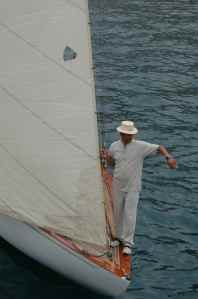 came no doubt from the news on September 18 that after much negotiating, Monaco had finally been taken off the OECD’s “grey list” of countries friendly to tax evaders. This year, all attention focused on the birthday of the Monaco Yacht Club’s flagship, Tuiga. This sleek, 92-foot gaff-cutter was built in 1909 by William Fife III as the twin to the King of Spain’s Hispania. She was not the only vessel at the confab to come from that famous Scottish yard, but she did prove that 100 years makes little difference to the well-built by taking first place at the September 17 big ship regatta. “Some of the best sailing weather I have ever experienced,” said one member of the crew on the Moonbeam IV, another of Fife’s gaff cutters, which came in second in the race.
came no doubt from the news on September 18 that after much negotiating, Monaco had finally been taken off the OECD’s “grey list” of countries friendly to tax evaders. This year, all attention focused on the birthday of the Monaco Yacht Club’s flagship, Tuiga. This sleek, 92-foot gaff-cutter was built in 1909 by William Fife III as the twin to the King of Spain’s Hispania. She was not the only vessel at the confab to come from that famous Scottish yard, but she did prove that 100 years makes little difference to the well-built by taking first place at the September 17 big ship regatta. “Some of the best sailing weather I have ever experienced,” said one member of the crew on the Moonbeam IV, another of Fife’s gaff cutters, which came in second in the race.
The actual birthday celebration was scheduled for Saturday evening. The day had been disappointing weather-wise: After a stormy night with some flooding along the coast, the wind had dropped leaving the sky cloudy and the sea billowing in lazy, glassy swells. There was a half-hearted attempt to race a bit in the afternoon. But the real spectacle was the parade of boats leaving the harbor, their crews standing in formation on the decks and booms, shouting good wishes, hip-hip-hurrahing and shooting off the occasional cannon. But without even a slight breeze, the regatta soon had to be cancelled, and everyone returned to firm ground to get ready to toast the Club’s grande dame, the Tuiga, with a cocktail of Glenmorangie – in honor of the ship’s Scottish architect – crushed ice and what tasted like strawberries. The day was chosen purposely for a vessel born in 1909: It was September 19 (19/09) and the ceremonies began more or less on time at 19:09 hours. A crowd of onlookers all dressed in early-20th-century costumes had squeezed onto the narrow quay to watch Prince Albert II along with a group of dignitaries and VIPs shaking hands, displaying pictures and brandishing champagne bottles like religious icons. And standing on Tuiga’s bow was the genial Robert Watt in full regalia. Whenever he finished one piece, a small band on a raft filled the silence with more modern fare, a wistful Flower of Scotland giving way to Amazing Grace.

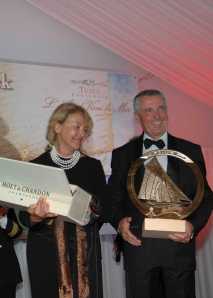
Tuiga was not the only focus of the general admiration. On Friday night, the Belle Classe prize was awarded to Daniele Canelli, an Italian entrepreneur and enthusiastic sailor who lives in South Tyrol/Italy. His 85-foot ketch, Javelin, was built in 1897 by Thomas Edward Payne. It had been languishing in Soto Grande near Gibraltar when Canelli got the offer the buy it. As a builder of houses and boats, he knew what to expect, and set about the task with a passion bordering on obsession. Four years and 57,000 man hours later (the official website says 47,000), the Javelin was born again as a modern, even luxurious, sailing yacht. Canelli spared no expense to do the job right; he even went to Galicia, Spain, to find oak trees with the right curvature for the frame.
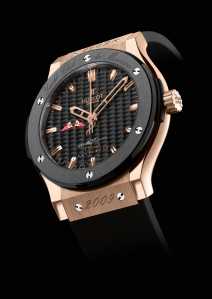
For his pains, Daniele Canelli, a quiet man at the best of times, received not only the award, a large brass plaque in the shape of a sailing yacht, but also some special gifts from the Tuiga Centenary partners: a weighty magnum of Moet & Chandon and a special limited edition Hublot watch of rose gold and ceramic and bearing the flag of the Club. (For the uninitiated, “Hublot” means porthole, which is exactly what these hyper-luxurious timepieces look like). He accepted the honors with with due modesty and glittering eyes. The Belle Class is not the end of a process, but rather the beginning. The charter is clear about it being both a challenge and a responsibility. The winner must demonstrate “the observation of marine etiquette, reciprocal assistance, mutual support, and a worthy reception – on land, as on sea; respect for the environment, and due honour to those that are skilled in their crafts – these are important traditions to pass on to future generations.”
The explorer

Numerous VIPs of the sea showed up for the event − this writer ended up in a shuttle from the airport with Catherine Chabaud, the first woman to sail around the world solo – but only one “Personalité de la Mer” (Personality of the Sea) can be chosen at a time. The coveted award went to the South African explorer Mike Horn, a man who can say truly that he has been to the world’s hottest and coldest places. He has kayaked down killer rapids, marched across continents, made tea for His Royal Highness Albert II of Monaco in the midst of a polar night at well below minus 40 degrees Celsius. He speaks of sailing through typhoons the way some people speak of taking a walk in an April shower. But he is not just a thrill-seeker. As he received his plaque from Prince Albert II, Horn, launched boldly into the subject of environmental awareness and the need to clean up the seas, especially in light of 20,000 plastic bottles per square kilometer. The statement did make a silent but noticeable ripple in the conviviality, but only for a few seconds. Horn is visibly a man committed to his cause. It’s in every cell of his finger-crunching handshake, in the dark, intense eyes, in the latent kinetic energy that clashes with the staid lines of a suit and tie. “The prize makes me want to work harder and better to get more knowledge,” Horn said during a chance en counter on the dock the day after. “There is a definite change in the climate that I have seen on the oceans being an explorer for 20 years and my concern is that the human being is accelerating this process. I spend 99.9% of my time observing nature and if you know how to listen and how to look, you can learn.” Horn believes that it will take more than just environmental studies to get people to understand. He and his wife Cathy – they have two daughters and live in landlocked Switzerland – have launched the Young Explorers’ Program (YEP) to get young adults to experience the planet and then pass on the information and knowledge to others. This giant, world-embracing project was named Pangaea, after the world’s first single continent. It also stands for Pan-Global Adventure for Environmental Action, and involves clean-up projects as well.
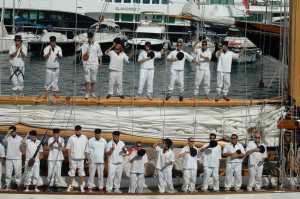
The spectators
 The Classic Week in Monaco is undoubtedly a grandiose spectacle that cannot fail to move even the most bitter opponent of luxury. The dominating quality of the whole event was passion and a sense of decorum and conviviality typical of the sailing crowd. “It’s a very friendly fraternity,” says Keith Jones, a self-professed neophyte where yachting is concerned. He and his wife Ruth run an elevator refurbishing company in Warrington, UK. At a recent charity auction by the Manchester United Foundation, they bid for a junket to the Monaco Classic Week. To their surprise, Jean-Claude Biver, head of Hublot – and a towering figure in Swiss watch making – arrived on stage and in typically flamboyant fashion threw in one of the Tuiga special edition watches to sweeten the prize… And this couple – whose own private story has a touch of the fairytale – suddenly found themselves chatting with a real live Prince. For Ruth Jones, the event in general and the close-up view of the regatta in particular, was definitely an eye-opener: “It was like a dream,” she reminisced, while enjoying a last flute of that endless supply of champagne. “It was as if you were watching paintings going by in the ocean. I am smitten with it now.”
The Classic Week in Monaco is undoubtedly a grandiose spectacle that cannot fail to move even the most bitter opponent of luxury. The dominating quality of the whole event was passion and a sense of decorum and conviviality typical of the sailing crowd. “It’s a very friendly fraternity,” says Keith Jones, a self-professed neophyte where yachting is concerned. He and his wife Ruth run an elevator refurbishing company in Warrington, UK. At a recent charity auction by the Manchester United Foundation, they bid for a junket to the Monaco Classic Week. To their surprise, Jean-Claude Biver, head of Hublot – and a towering figure in Swiss watch making – arrived on stage and in typically flamboyant fashion threw in one of the Tuiga special edition watches to sweeten the prize… And this couple – whose own private story has a touch of the fairytale – suddenly found themselves chatting with a real live Prince. For Ruth Jones, the event in general and the close-up view of the regatta in particular, was definitely an eye-opener: “It was like a dream,” she reminisced, while enjoying a last flute of that endless supply of champagne. “It was as if you were watching paintings going by in the ocean. I am smitten with it now.”
The week might have gone on forever, but there is a real world beyond Quai Antoine 1er. Gradually, the shuttles carried hundreds of guests back to Nice airport. Ruth and Keith Jones flew home with great stories to tell, and the journalists began filing stories. The Sedov steamed out to the loud tooting of the other yachts, passing regally under the duckbill nose of an obtuse modern cruise ship that saddled the swell like some morose suburban office building. Many crews took to their yachts and headed to other meetings, in St. Tropez and Cannes. The tangle of masts, sails and cables slipped away, once again revealing the banal high-rises of the city, where an army of accountants are busy turning numbers into dreams and dreams into numbers. It was back to the grind after five days of Brigadoon. As for Robert Watt, who spends his winters in the Austrian mountains of Innsbruck as a certified ski instructor, he flew off to Bethlehem, Pennsylvania, to entertain more rugged folk at another festival. And for some reason, perhaps a bureaucratic glitch, Monaco woke up Monday morning and found itself back on the “grey list.” Life really is unpredictable.
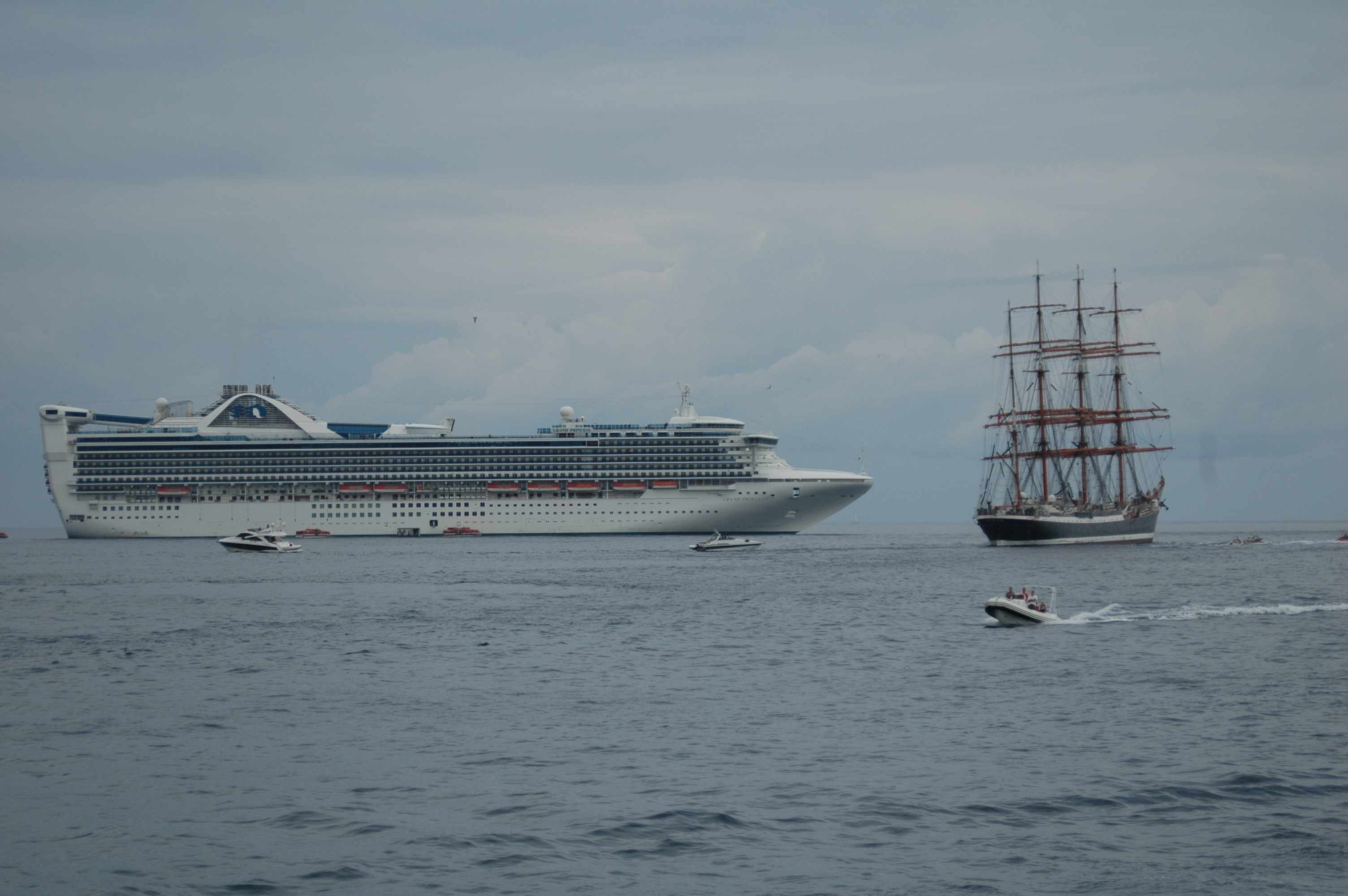
© Marton Radkai, 2009



Absolutely GREAT article. I felt as if I were there, that is how well you got the atmosphere down pat.
Thanks a lot!
Hi martin lovely to read the article, it felt like we were still there. Hopefully we will see you in the not too distant future. Thanks for being part of the dream and thank you for the nice memories. Keith and Ruth Jones xxx